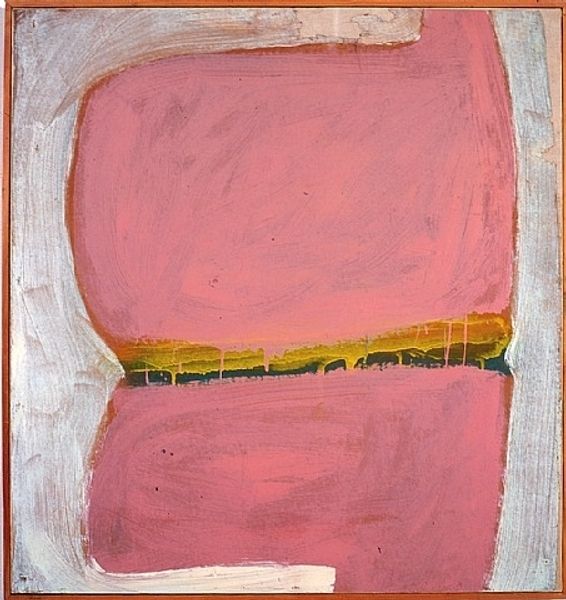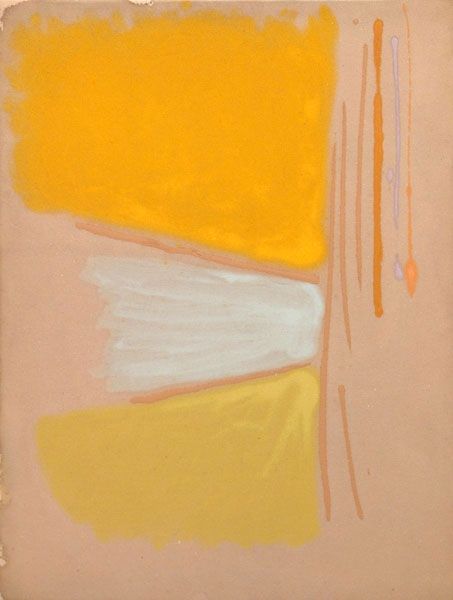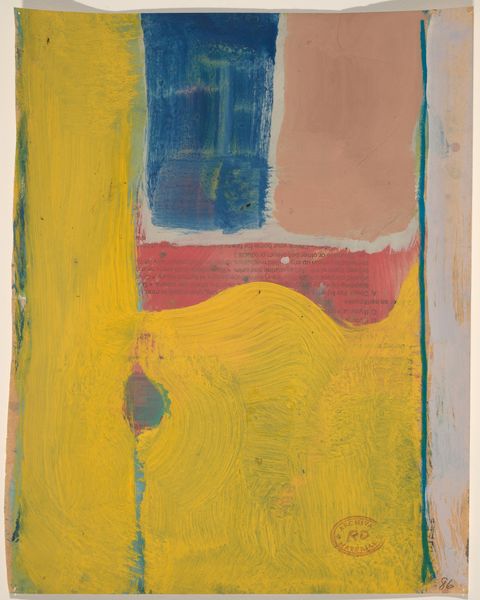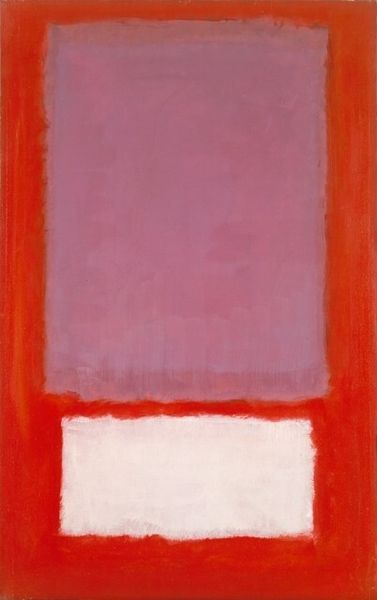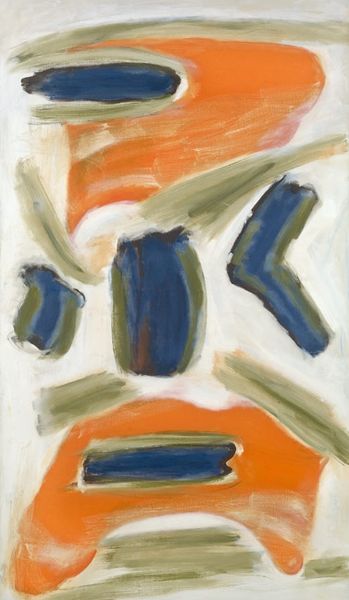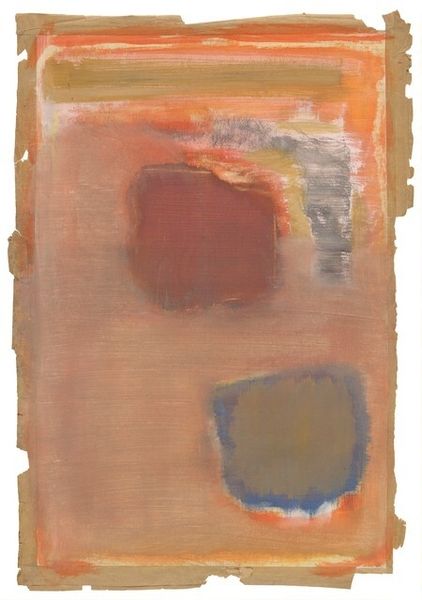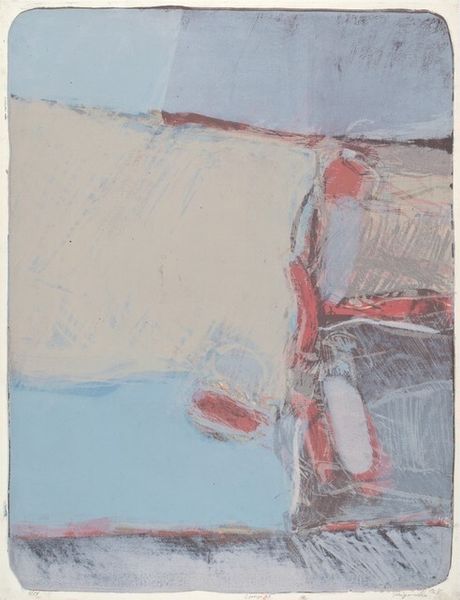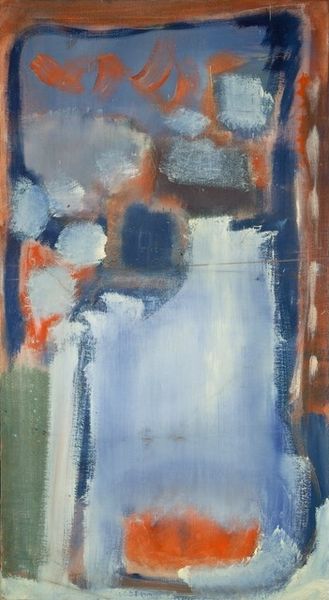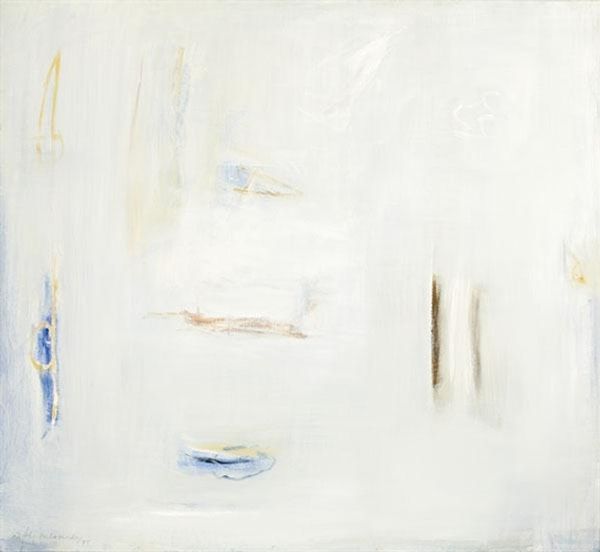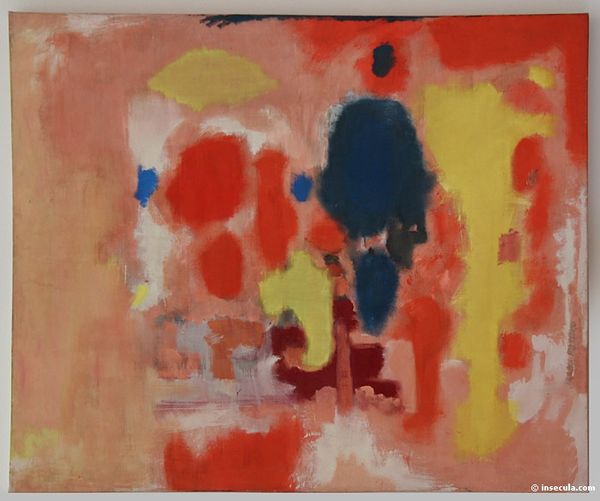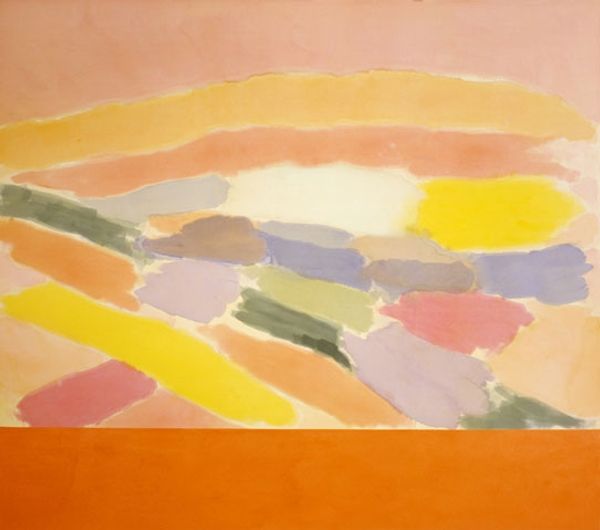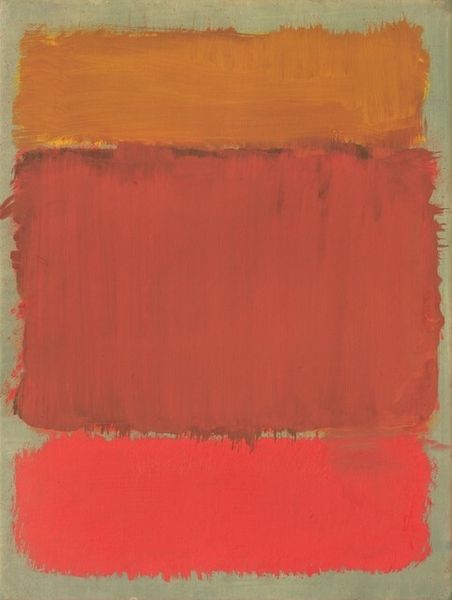![No. 7 [or] No. 11 by Mark Rothko](/_next/image?url=https%3A%2F%2Fd2w8kbdekdi1gv.cloudfront.net%2FeyJidWNrZXQiOiAiYXJ0ZXJhLWltYWdlcy1idWNrZXQiLCAia2V5IjogImFydHdvcmtzLzE0ZDU3ZTNiLTA3MjQtNDhiOS1hZjY3LThiYjQ3MjMwMzEwYy8xNGQ1N2UzYi0wNzI0LTQ4YjktYWY2Ny04YmI0NzIzMDMxMGNfZnVsbC5qcGciLCAiZWRpdHMiOiB7InJlc2l6ZSI6IHsid2lkdGgiOiAxOTIwLCAiaGVpZ2h0IjogMTkyMCwgImZpdCI6ICJpbnNpZGUifX19&w=828&q=75)
painting, oil-paint
#
abstract-expressionism
#
abstract expressionism
#
painting
#
oil-paint
#
landscape
#
abstraction
#
line
Dimensions: overall: 173 x 111 cm (68 1/8 x 43 11/16 in.)
Copyright: National Gallery of Art: CC0 1.0
Curator: This is Mark Rothko’s "No. 7" or perhaps "No. 11," painted in 1949. Looking at the piece within the history of postwar abstraction, its seemingly simple composition becomes deeply complex in relation to the context of its creation, offering viewers space to meditate on both personal and collective anxieties during the Cold War era. What are your initial thoughts on it? Editor: It’s remarkably calm. I’m struck by the bands of color. They remind me of stratified layers, geological formations perhaps, or even dye batches in a factory setting. It's surprising how something so abstract evokes these images of process and labor. Curator: Absolutely, that tension between industrial and natural imagery reflects Rothko’s unique ability to weave together individual emotional experience and cultural memory, really echoing existential questions prominent in mid-century thought. This painting comes at a moment when artists began exploring internal psychological realms after the profound social and political upheavals caused by two World Wars. Editor: Considering that era, I find myself reflecting on the material implications of the process, the way Rothko builds up the oil paint in these successive layers. There's a sense of deliberation, of carefully considering each added element. Each layer transforms the colors that appear beneath. Did he dilute the oil, or was it applied at full strength to achieve those blended, hazy edges? Curator: Good question! Understanding his technique helps us see how he captures those intense yet diffuse color fields. If we situate the painting within discussions around art and gender, for instance, the work directly confronts masculine aesthetics. Rothko challenges dominant narratives that associate softness and vulnerability as feminine traits by insisting on their value in achieving a uniquely powerful form of expression. Editor: And there is a physical quality to his method that demands attention. I keep thinking about his choice to apply layer upon layer—actions performed that create the effects we are looking at here. Those hazy divisions seem the result of numerous additive and subtractive motions performed by the hand of the artist, underscoring Rothko’s active participation in the materiality of making art. Curator: Precisely! Thinking about his choices really opens up an understanding of the emotional depth he conveys. Through Rothko's process, the artwork invites us to contemplate issues like gender dynamics and political power that shape both ourselves and the artwork, fostering moments of empathy and reflection. Editor: It truly emphasizes how materiality is so integral in allowing those meanings to surface, isn’t it? It's no longer just paint on canvas but a meditation made palpable through its making. Curator: Precisely. Looking closely at these works prompts us to think not only about the personal but about the social and historical contexts from which this work springs forth.
Comments
No comments
Be the first to comment and join the conversation on the ultimate creative platform.
